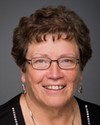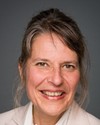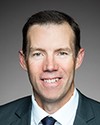That is a very good question.
Actually most of the developed world is in a similar situation to us in that we don't see enough women coming in, particularly, as I said, to the physical sciences, chemistry, engineering, computer sciences, etc. I think to some extent a lot of us are struggling. The U.S. has a program called Advance, in which they've made some interesting investments, but I think it's probably too early to say whether or not those are successful. I think right now much of the developed world is piloting, experimenting, and trying to find effective ways.
For example, we had our chairs for women in science and engineering summit in the U.S. in 2013, which was the summit you were referring to. It was co-hosted by NIH, NSF, CONACYT, which is the Mexican funding authority, us, and the Canadian Institutes of Health Research, also in Canada. When we held that summit, our five chairs for women in science and engineering were looked at actually as a best practice and as a model that a number of countries were going to be following up on after the summit, and are following up on.
I'm going to ask Serge if he has anything he'd like to add.




